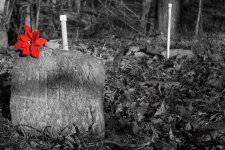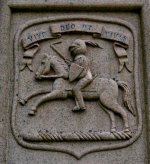You are using an out of date browser. It may not display this or other websites correctly.
You should upgrade or use an alternative browser.
You should upgrade or use an alternative browser.
Post your Cemetery Shots!
- Thread starter Rick M
- Start date
Blue439
New member
Let us indeed try and revive, if not the dead, at least this dead thread... I’m gonna pull out my cemeteries...
Old cemetery of Charonne in Paris:

Death by the ocean in the coastal village of Jardim do Mar (“Garden by the Sea”), on the Portuguese island of Madeira. If eternal the sleep must be, might as well be lulled by the sounds of the sea...
Nikon Z7, Nikkor Z 14-30mm, ƒ/4 S lens. Handheld.

Old cemetery of Charonne in Paris:
Death by the ocean in the coastal village of Jardim do Mar (“Garden by the Sea”), on the Portuguese island of Madeira. If eternal the sleep must be, might as well be lulled by the sounds of the sea...
Nikon Z7, Nikkor Z 14-30mm, ƒ/4 S lens. Handheld.
Blue439
New member
The small village of Camboulit in the Aquitaine region (southwestern France) is particular as it includes the romantic ruins of a Romanesque church built during the first half of the 1100s. It is mentioned in 1146 among the possessions of the abbey of Saint Sauveur in the town of Figeac. It was given over to the Protestants in 1562 and used as a temple for a while. It was listed as a Historic Landmark in 1912.
My reconstruction of things is that in the Middle Ages, the cemetery was of course around the church. Then, when (late 19th century) sanitation and hygiene regulations made it mandatory to move cemeteries outside of settlements and decommission the ones within, this one survived as, over the centuries, the village itself had moved slightly away, so that the cemetery and the old parish church, now ruined, were far enough to remain.
Nikon Z7, Nikkor Z 14-30mm, ƒ/4 S lens, handheld.

My reconstruction of things is that in the Middle Ages, the cemetery was of course around the church. Then, when (late 19th century) sanitation and hygiene regulations made it mandatory to move cemeteries outside of settlements and decommission the ones within, this one survived as, over the centuries, the village itself had moved slightly away, so that the cemetery and the old parish church, now ruined, were far enough to remain.
Nikon Z7, Nikkor Z 14-30mm, ƒ/4 S lens, handheld.
Blue439
New member
Still in the French province of Saintonge, which is also featured in my post of today in the “Post your black-and-white photos” section of the forum, this is the old cemetery of the village of Aulnay, which sits behind the parochial church dedicated to Saint Peter. That church was built on a site where Pagan rites used to take place, and where at least one earlier church had been built, as archæology teaches us.
Erected between 1120 and 1140, this church was listed as a Monument historique (“Historic Landmark”) on the very first list drawn up in 1840 under the ægis of Minister Prosper Mérimée. It is also listed as a UNESCO World Heritage site, as it stands on a Path to Compostela, the Via Turonensis that comes from Paris, Chartres and Tours. Owing to its location, halfway between the cities of Poitiers and Saintes, Aulnay always was, and still remains today, a convenient stopover for pilgrims on the path.
For obvious sanitary reasons, the cemetery has been decommissioned for a long time, but there are some very old tombs there, including sarcophagi from the Merovingian (5th–8th centuries) and Carolingian (8th–9th centuries) periods. Some may even be from the late Antiquity, around 300 or 400 CE. That is why the cemetery was allowed to remain as is.
This is a composite photograph made up of two focus-stacked exposures for greater depth of field. Stack processed with Helicon Focus.
Nikon Z7, Nikkor 19mm, ƒ/4 PC-E tilt-shift lens. Gitzo tripod, Benro geared head.

Erected between 1120 and 1140, this church was listed as a Monument historique (“Historic Landmark”) on the very first list drawn up in 1840 under the ægis of Minister Prosper Mérimée. It is also listed as a UNESCO World Heritage site, as it stands on a Path to Compostela, the Via Turonensis that comes from Paris, Chartres and Tours. Owing to its location, halfway between the cities of Poitiers and Saintes, Aulnay always was, and still remains today, a convenient stopover for pilgrims on the path.
For obvious sanitary reasons, the cemetery has been decommissioned for a long time, but there are some very old tombs there, including sarcophagi from the Merovingian (5th–8th centuries) and Carolingian (8th–9th centuries) periods. Some may even be from the late Antiquity, around 300 or 400 CE. That is why the cemetery was allowed to remain as is.
This is a composite photograph made up of two focus-stacked exposures for greater depth of field. Stack processed with Helicon Focus.
Nikon Z7, Nikkor 19mm, ƒ/4 PC-E tilt-shift lens. Gitzo tripod, Benro geared head.
Blue439
New member
The same cemetery, this time in front of the church. The tallish structure on the right is a croix hosannière (“Hosanna Cross”, perhaps?) from the late Middle Ages (1400s). Those “crosses” were erected as funerary edicules, often over communal graves and ossuaries. They are few and far between, mostly in the western part of France.
Nikon Z7, Micro-Nikkor 85mm, ƒ/2.8 PC-D tilt-shift lens. Gitzo tripod, Benro geared head. Natural light.

Nikon Z7, Micro-Nikkor 85mm, ƒ/2.8 PC-D tilt-shift lens. Gitzo tripod, Benro geared head. Natural light.
Blue439
New member
Saint-Pierre-les-Églises, a village in central/western France, features a cemetery that’s been there for ages: it used to be a Merovingian necropolis. In it stands the small Saint Peter church, screened by secular trees. This church is also mostly Merovingian, as it was built during the 600s or 700s at the latest. The part on the right is a modern sacristy added during the 1700s †.
It is of course admirable on the outside, but the inside hides a true and unique wonder: alfresco paintings carbon-dated between 780 and 980, making them part of the oldest in the whole Western world.
The cemetery is still in use, as it lies quite outside of the village and therefore conforms to hygiene regulations.
Nikon Z7 II, Nikkor 19mm, ƒ/4 PC-E tilt-shift lens. Gitzo tripod, Benro geared head. Natural light.
† : the French administration of Monuments historiques (Historic Landmarks) has an unwritten rule dubbed “The One-Hundred Year Rule”, which stipulates that anything older than 100 years had to be kept and preserved, however ugly it may be. Therefore, the Saint Peter church will most likely never be enjoyed again in its own proportions and perspectives. This enormous wart of a sacristy will always remain attached to it!

It is of course admirable on the outside, but the inside hides a true and unique wonder: alfresco paintings carbon-dated between 780 and 980, making them part of the oldest in the whole Western world.
The cemetery is still in use, as it lies quite outside of the village and therefore conforms to hygiene regulations.
Nikon Z7 II, Nikkor 19mm, ƒ/4 PC-E tilt-shift lens. Gitzo tripod, Benro geared head. Natural light.
† : the French administration of Monuments historiques (Historic Landmarks) has an unwritten rule dubbed “The One-Hundred Year Rule”, which stipulates that anything older than 100 years had to be kept and preserved, however ugly it may be. Therefore, the Saint Peter church will most likely never be enjoyed again in its own proportions and perspectives. This enormous wart of a sacristy will always remain attached to it!
Last edited:
lightcapture
Senior Member
Blue439
New member
In France, the principle at law is that no one may be interred anywhere but in an “official” cemetery. Administrative permits to be buried anywhere else, and particularly within the confines of one’s own property, are very difficult to obtain. Famous French actor Alain Delon, who died recently (August 2024), obtained such permission, and the photo below demonstrates that the brothers of the Cistercian abbey of Sénanque (Provence, southeastern France) have been granted a similar favor, in order to respect the tradition according to which, of course, monks having passed away are to be interred within the enclosure, at the back of the church, or on the northern side if possible (known as the side of the Dead), which is not the case here in Sénanque. A freshly dug tomb denotes, alas! a recent death in the community.
Nikon Z7 II, Nikkor 19mm, ƒ/4 PC-E tilt-shift lens. Gitzo tripod, Benro geared head. Natural light.

Nikon Z7 II, Nikkor 19mm, ƒ/4 PC-E tilt-shift lens. Gitzo tripod, Benro geared head. Natural light.
Blue439
New member
The old cemetery in the abandoned village of Vieux-Noyers in Upper Provence. The place is accessible only via a bad rock trail and I was glad to have a 4WD high vehicle to carry me and the equipment up there, as there is also a beautifully restored Romanesque church in that village —which is why I went in the first place, the cemetery was an incidental find.
Nikon Z7 II, Nikkor Z 24-120mm, ƒ/4 S lens, handheld.

Nikon Z7 II, Nikkor Z 24-120mm, ƒ/4 S lens, handheld.
Blue439
New member
In 2016, I was asked by the City of Lyons to take photographs of the old, monumental cemetery of Loyasse to document the interesting and curious tombs and funerary monuments that are to be found there. The photos were for the city’s archives and there was also a book project, but I don’t think it ever came to fruition. Loyasse is the oldest remaining cemetery in Lyons, and is traditionally considered the proper place of eternal rest for the wealthy bourgeois of the city. I went several times in 2016 ad 2017 and took most of those photographs with a splendid manual focus lens made by Cosina in Japan to look like a vintage Nikkor F, but with a modern optical formula, the coatings and all the technical trappings of the modern day, while retaining a very distinctive rendition of reality. It is branded by Voigtländer under the name Nokton, 58mm and ƒ/1.4. At the time I used it on a D810 but although I have sold that body long ago, I have retained the lens, as I know I will want to use it again for specific projects on mirrorless bodies.
Nikon D810, Voigtländer Nokton 58mm ƒ/1.8 lens, manual focus. Handheld, natural light.

Nikon D810, Voigtländer Nokton 58mm ƒ/1.8 lens, manual focus. Handheld, natural light.
Last edited:
Blue439
New member
Still in the Loyasse cemetery in Lyons. It is interesting to see how sensuality, not to say sexiness, managed to find its way into funerary statuary, even during prudish Victorian times. This leg-showing angel is a good example of that.
Nikon D810, Nikkor 35mm, ƒ/1.4 G lens. Handheld, natural light, single exposure.

Nikon D810, Nikkor 35mm, ƒ/1.4 G lens. Handheld, natural light, single exposure.















